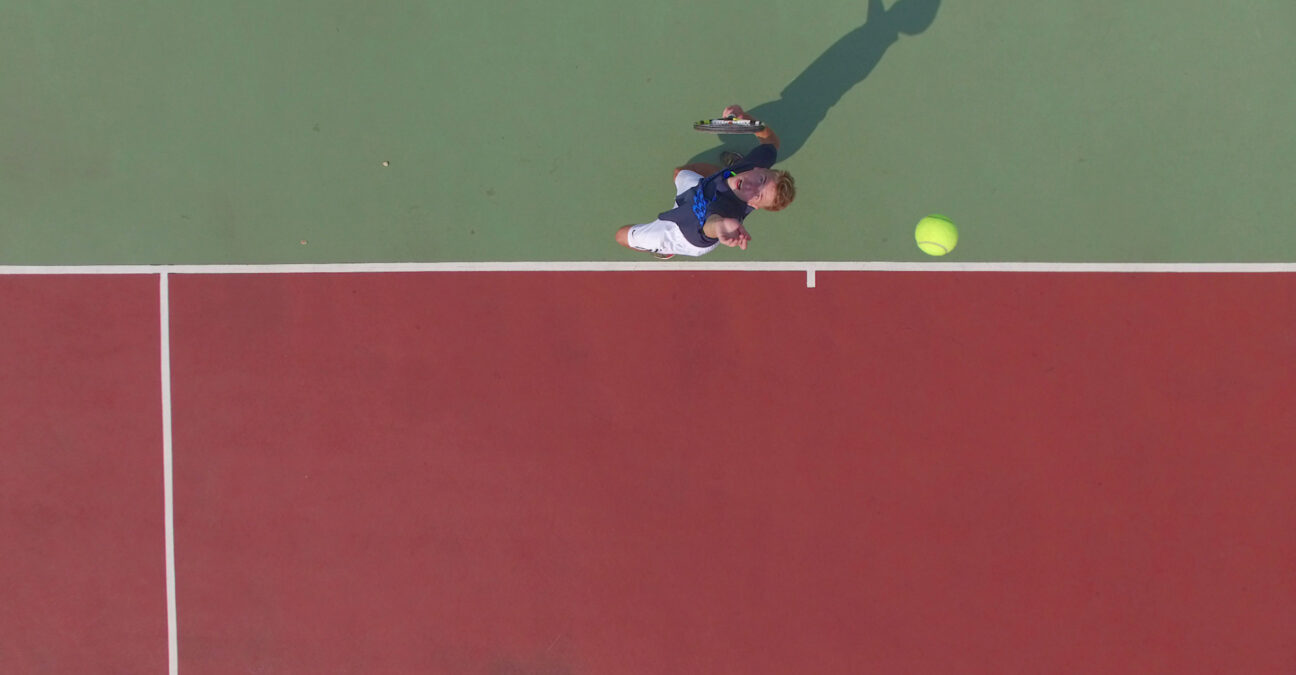The evolution of tennis: A sport of precision and power
Over the years, tennis has seen a significant evolution, not only in the style of play but also in technology and training methods.
 Tennis serve
Tennis serve
Tennis has transformed from a leisurely pastime enjoyed by European aristocrats to a globally celebrated sport with millions of followers. From the refined grass courts of Wimbledon to the clay of Roland-Garros, tennis showcases athleticism, strategy, and psychological endurance. The sport’s intricate blend of power, speed, and precision makes it a dynamic contest, testing players’ technical skills and mental resilience alike.
Over the years, tennis has seen a significant evolution, not only in the style of play but also in technology and training methods. Today’s athletes are better prepared than ever, combining rigorous training regimes with cutting-edge equipment to enhance their performance. With advancements in racquet technology, players can now generate more power and spin, pushing the boundaries of what’s possible on the court. The sport has shifted to an era where aggressive baseline play and powerful serves dominate, giving rise to stars like Rafael Nadal, Serena Williams and Novak Djokovic, who have taken the game to new heights.
The Modern Tennis Strategy: Adaptation and Innovation
In the current era, tennis players adapt their strategies to various surfaces and styles of opponents. Unlike earlier periods, when serve-and-volley dominated grass courts, players today blend elements of aggression and defense, adapting to opponents and match conditions. Surface adaptability is crucial for those looking to succeed across all four Grand Slam tournaments, with each surface — clay, grass and hard — favoring different styles of play.
For instance, clay courts slow down the ball, encouraging longer rallies and favoring baseline players with excellent stamina. Grass courts, on the other hand, favour players with strong serves and quick reflexes, as the ball travels faster and bounces lower. Hard courts, a middle ground, often lead to more balanced play, giving opportunities for both defensive and offensive strategies. Successful players understand how to modify their approach depending on the surface and opponent, making adaptability one of the hallmarks of a great tennis player.
The Role of Crypto Betting Sites in Tennis Wagering
Betting has become an integral aspect of the sports industry, and tennis is no exception. Among the latest trends is the rise of crypto betting sites, which allow fans to place bets using digital currencies like Bitcoin and Ethereum. These sites have introduced a new level of accessibility, privacy, and speed for bettors worldwide. Crypto betting is especially popular among tech-savvy audiences and offers distinct benefits, including secure, instant transactions and enhanced privacy protections. Moreover, the use of blockchain technology adds transparency to the betting process, creating a trusted environment for tennis fans eager to wager on their favorite players or predict match outcomes.
Technology and Data: Revolutionising Tennis Analysis
Technology has greatly influenced tennis, not only through equipment advancements but also by changing how players and coaches analyze performance. Hawk-Eye technology has transformed officiating, offering precise line calls that reduce human error and add an extra layer of fairness to the game. Additionally, data analytics has empowered players and coaches to dive into match statistics, analysing serve speeds, shot placement, and opponent tendencies.
Access to detailed data has allowed players to fine-tune their strategies, identifying weaknesses to exploit in their opponents’ games and areas where they can improve. Analytics have become particularly valuable in predicting and preparing for competitors’ playing styles, giving top players a competitive edge.
Physical and Mental Demands in Tennis
The physical demands of tennis are apparent in the high level of fitness required to play at an elite level. Tennis players endure extensive training to build strength, agility, and cardiovascular endurance. During a match, players often sprint, twist, and lunge repeatedly, which requires muscular endurance and impeccable coordination. Mental strength is just as critical, as players need to stay focused and composed, especially during crucial points and tiebreakers.
Mental toughness is often the deciding factor in high-stakes matches, and champions develop resilience through intense focus, positive self-talk, and the ability to recover from setbacks quickly. Overcoming the pressures of major tournaments, where physical exhaustion and psychological stress converge, is part of what sets top-tier athletes apart from the rest.
The Future of Tennis: New Talent and Global Growth
The future of tennis looks bright as new talent emerges from all corners of the globe. Countries such as China, Japan, and Russia are producing world-class players, contributing to the sport’s growing diversity. Tennis is also benefiting from expanded reach through streaming and digital platforms, which make it accessible to global audiences.
In addition to growing popularity, sustainability efforts are shaping the future of tennis. Organisations are increasingly focused on reducing the sport’s environmental impact, from using eco-friendly equipment to minimizing travel-related emissions. As tennis continues to evolve, fans can look forward to more thrilling matches, emerging stars, and innovations that keep the sport exciting and accessible to a worldwide audience.
People in this post
More tennis news
Dubai Open: Paolini ends run of qualifier Lys, moves into last 16

Qatar Open: Bergs edges past Bautista Agut to book spot in second round

Qatar Open: Rublev too good for Bublik, moves into second round

Qatar Open: Van De Zandschulp advances to second round

Qatar Open: De Minaur eases past Safiullin to record 200th hard-court win

